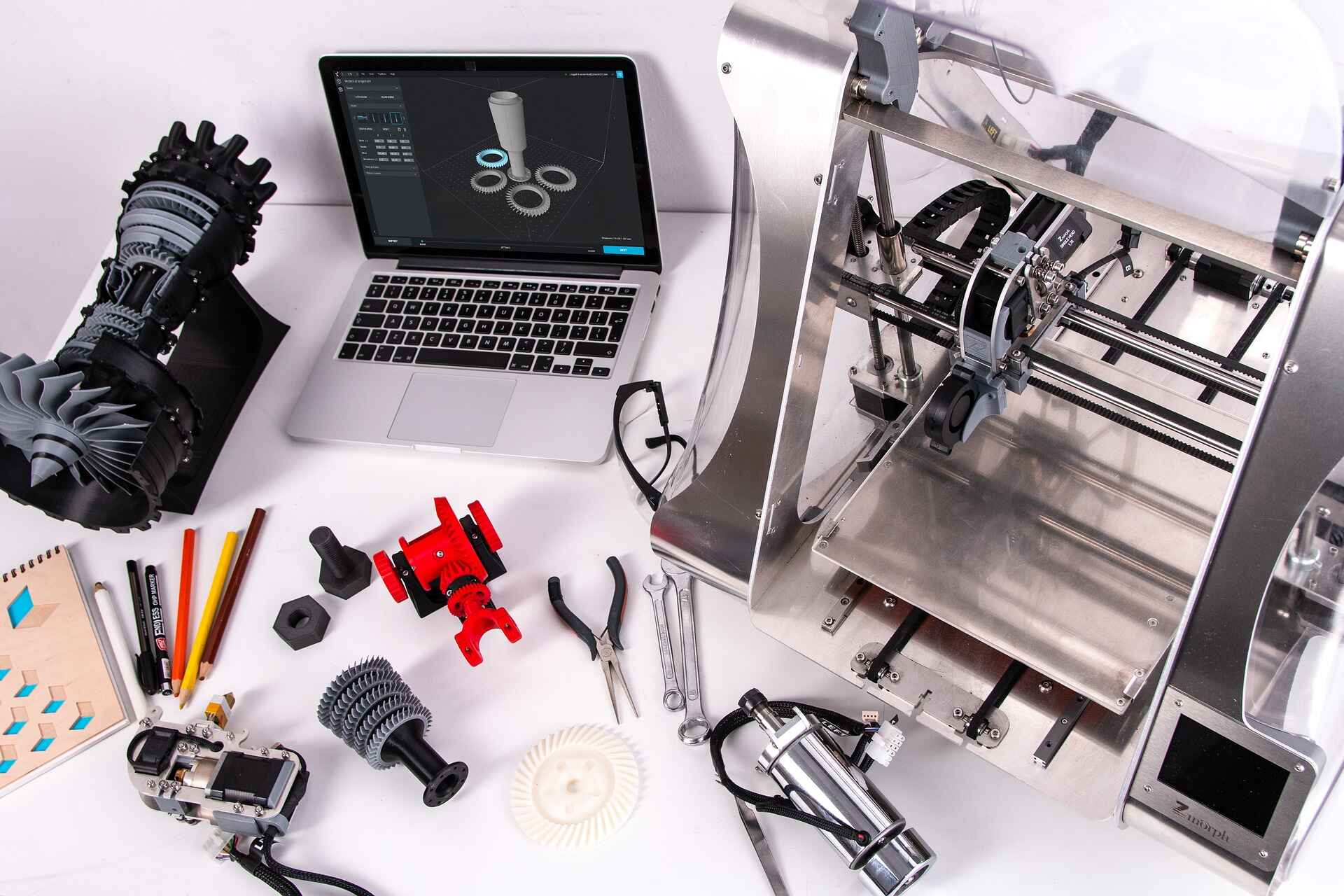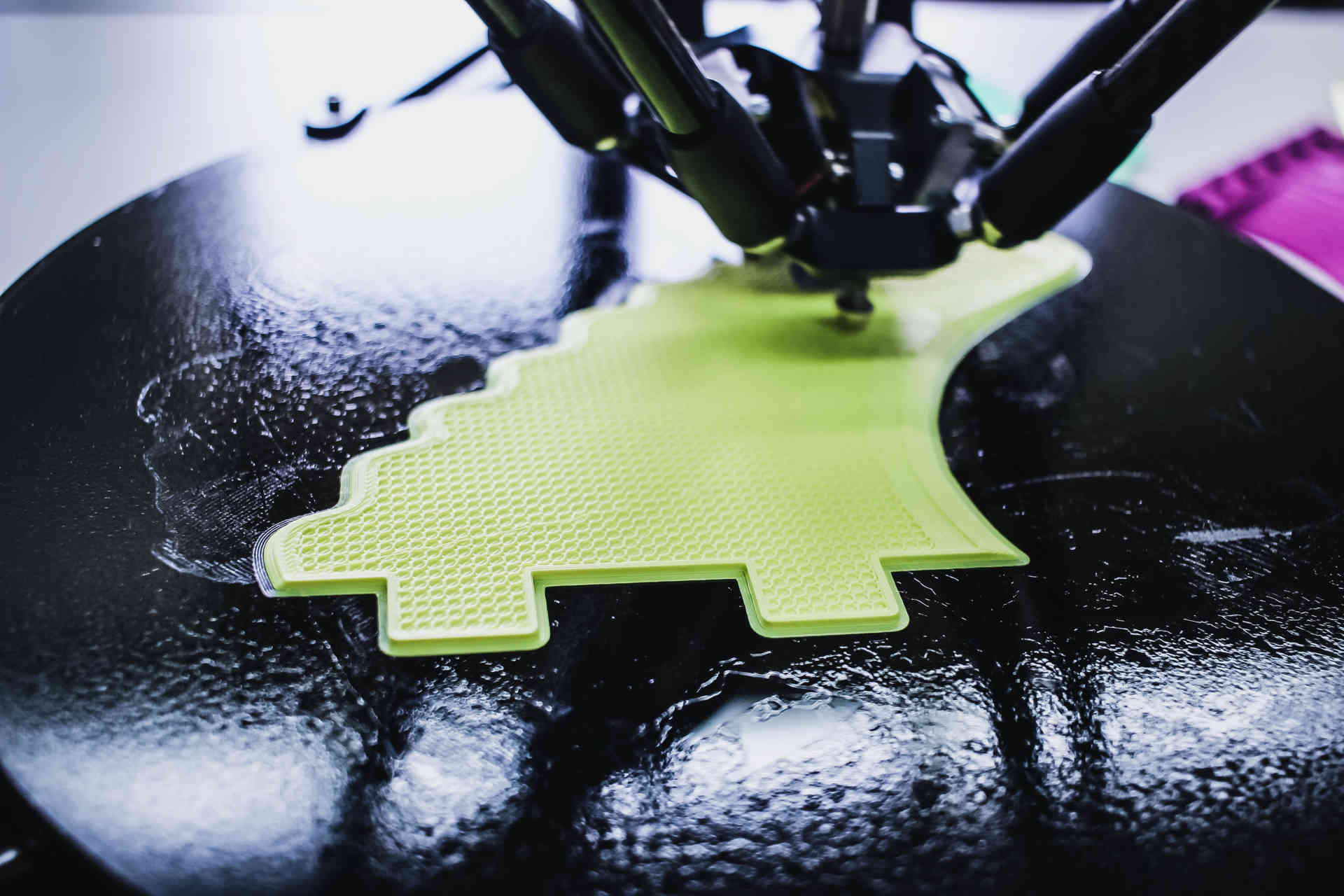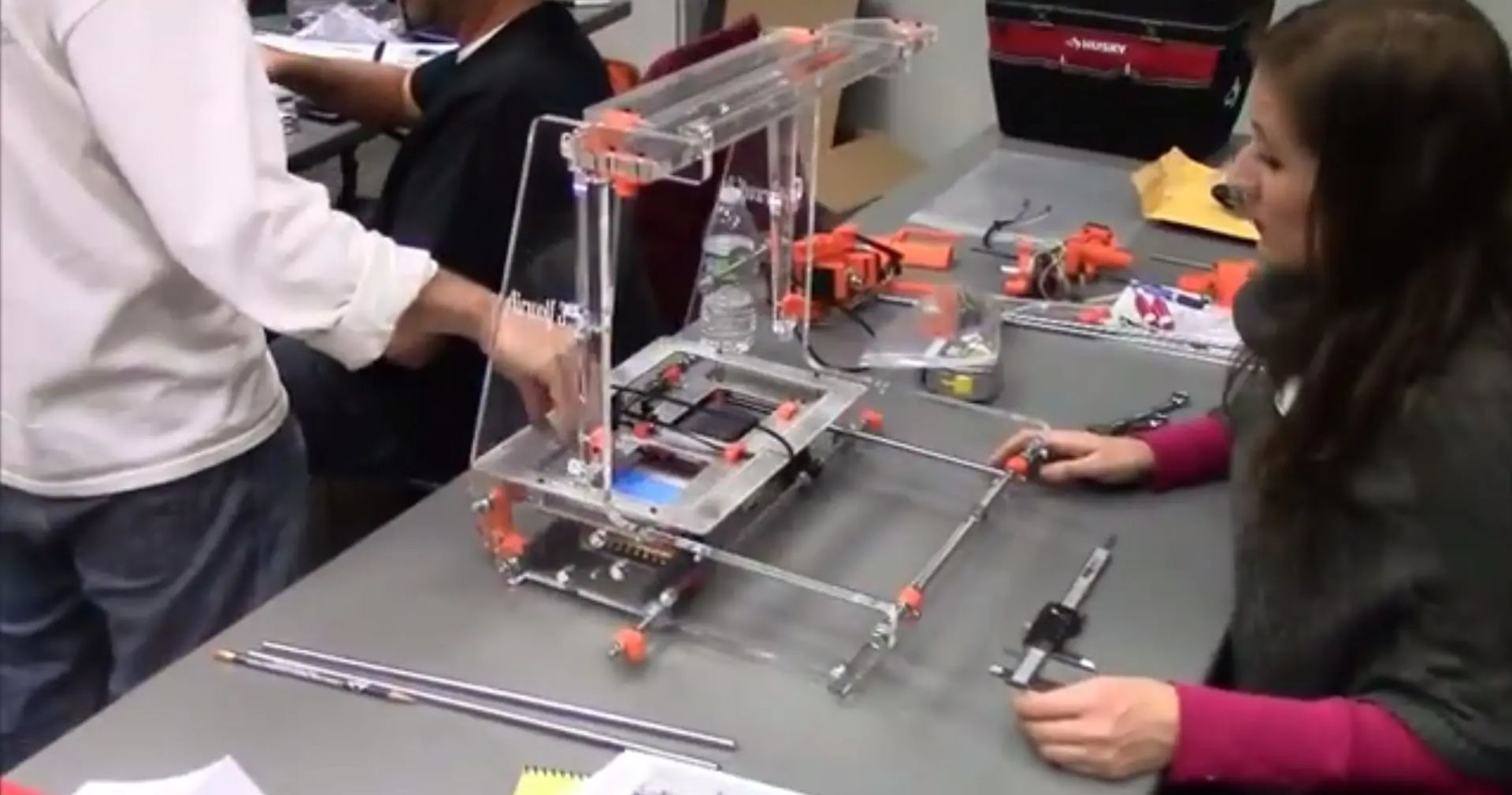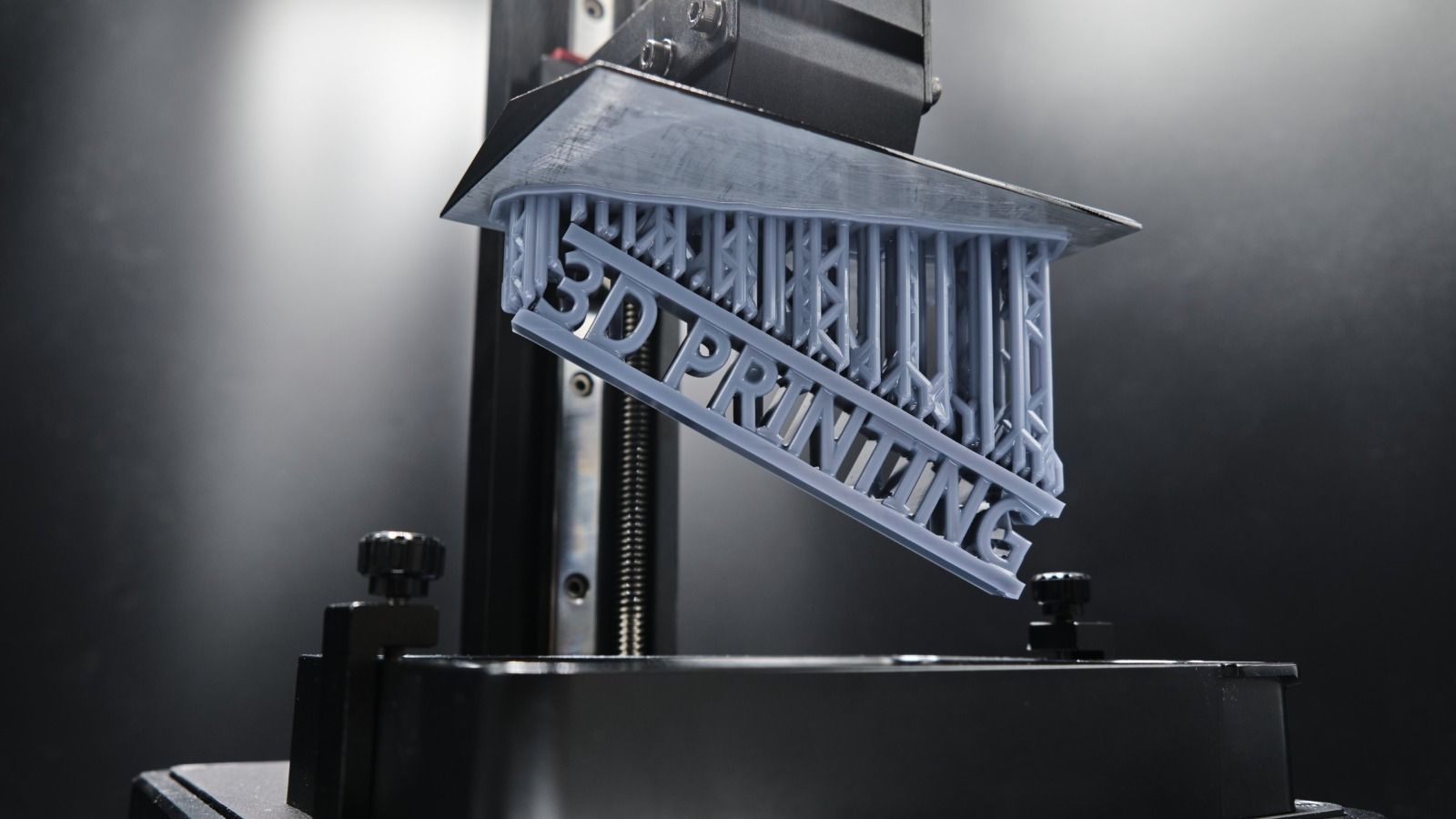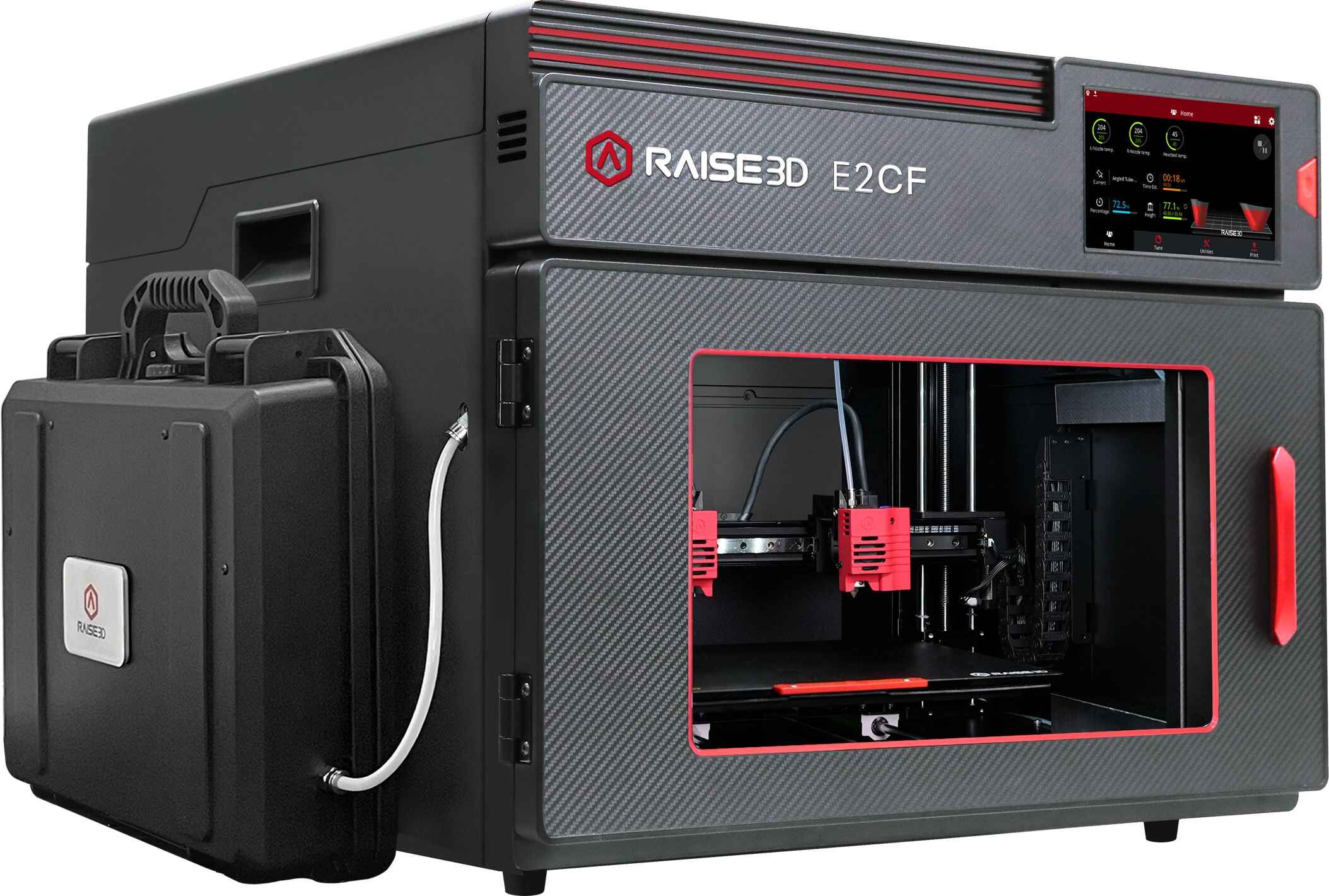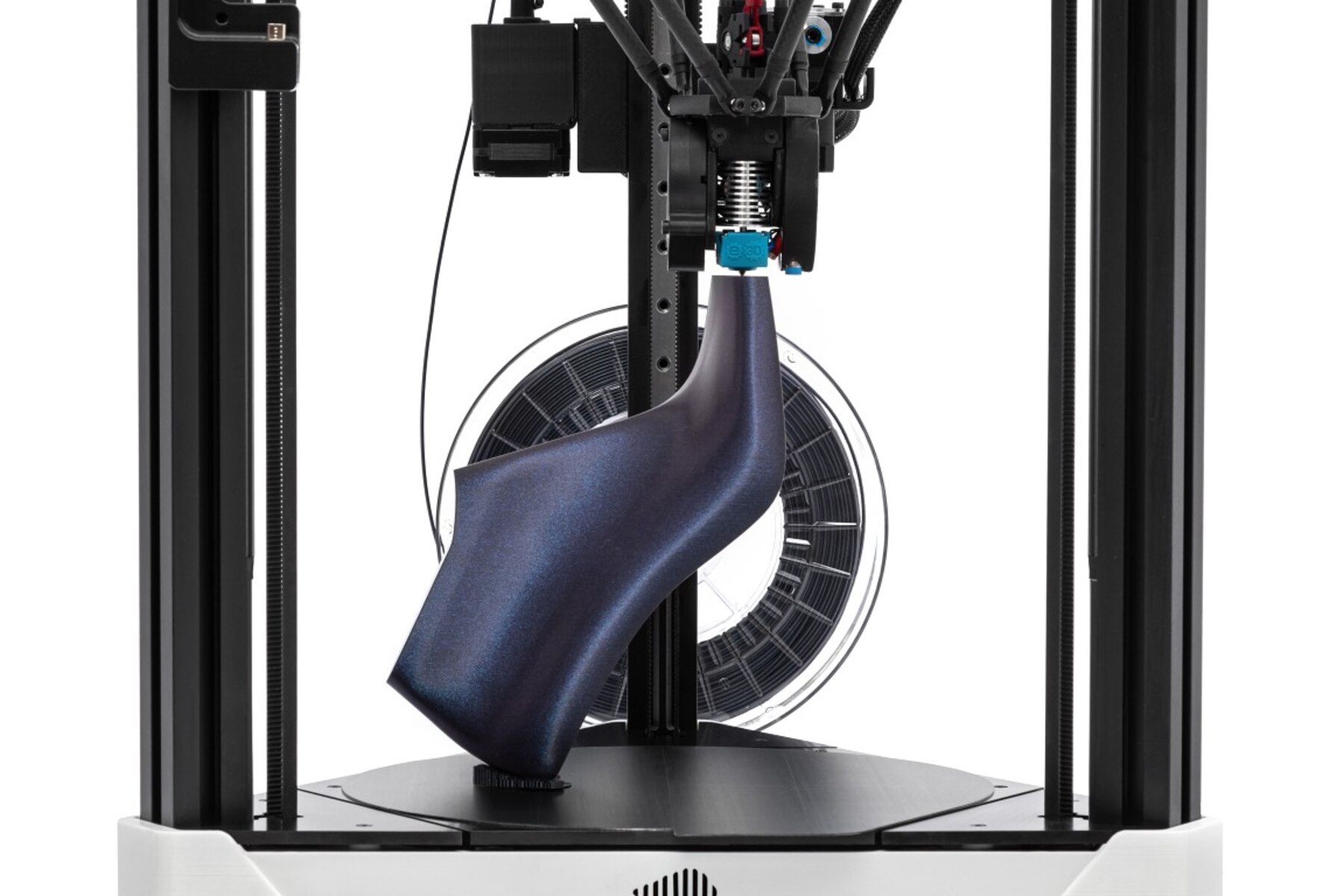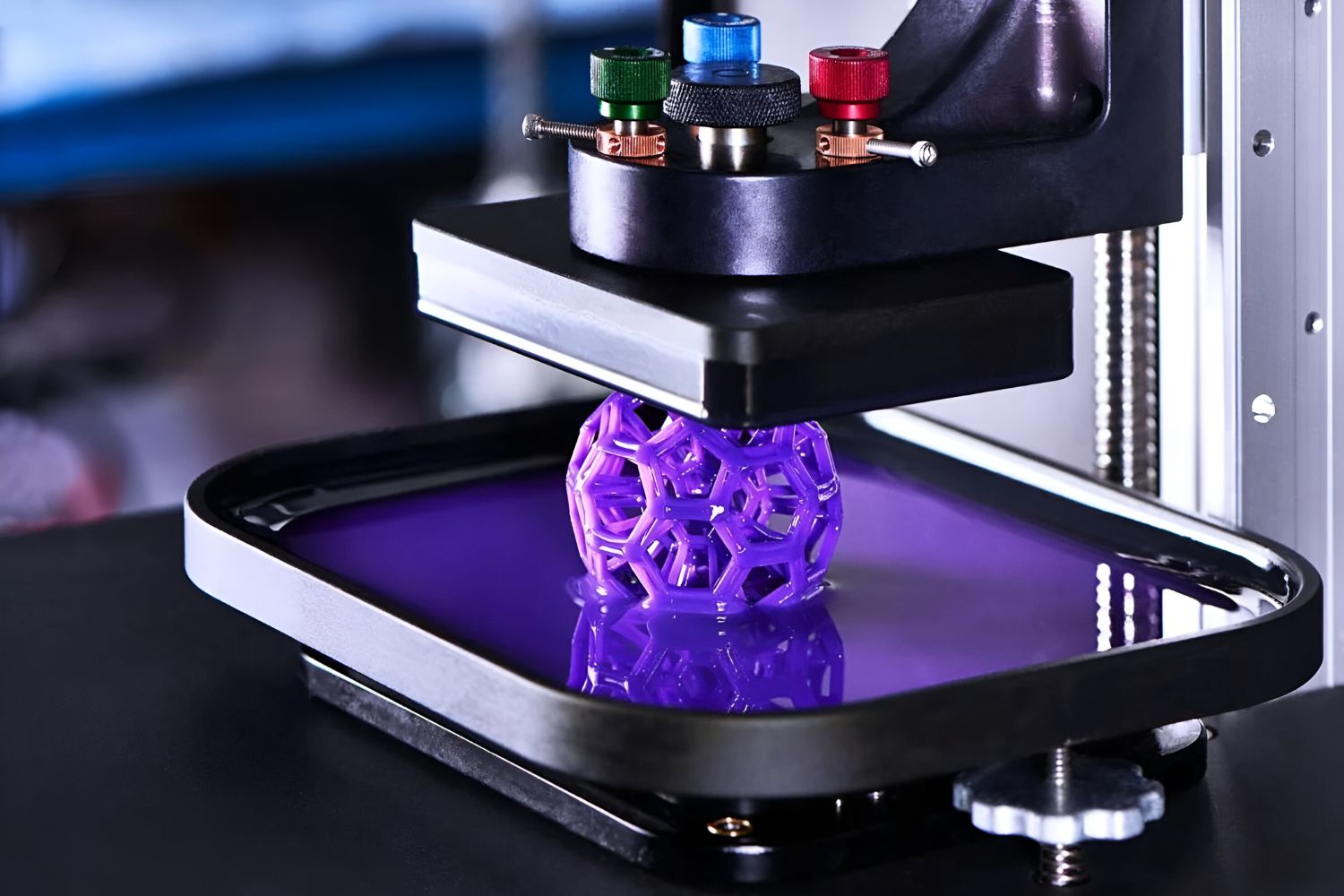Introduction
Designing and creating objects using a 3D printer has become increasingly popular in recent years. Whether you are an avid hobbyist or a professional designer, the ability to turn your ideas into physical objects is both exciting and rewarding. However, understanding the process of designing for a 3D printer is crucial to ensure successful prints.
In this article, we will provide an overview of the steps involved in creating designs for a 3D printer. From choosing the right software to preparing the 3D printer and printing the object, we will guide you through the process to help you create high-quality prints.
Designing in 3D allows you to bring your imagination to life by turning two-dimensional ideas into three-dimensional objects. The process involves creating a digital model of the object, which is then translated into a format that the 3D printer can understand. However, there are certain considerations you need to keep in mind to ensure that your design is suitable for 3D printing.
By following the steps outlined in this article, you will gain a solid understanding of the process and be well-equipped to create your own designs for 3D printing. So let’s get started and dive into the exciting world of 3D design and printing!
Designing in 3D: An Overview
Designing in 3D involves creating a digital model that represents the object you want to print. This model serves as the blueprint for the 3D printer to follow when creating the physical object. Unlike traditional 2D design, designing in 3D adds another dimension, allowing for greater complexity and intricacy in the final product.
One of the key advantages of 3D design is the ability to bring ideas to life with precision and accuracy. Whether you’re designing functional prototypes, artistic creations, or replacement parts, 3D design offers endless possibilities.
There are several software options available for 3D design, each with its own features and learning curves. Some popular software includes Autodesk Fusion 360, SolidWorks, Tinkercad, and Blender. These tools provide a range of functionalities, from basic shape creation to intricate sculpting and rendering capabilities.
When starting a 3D design project, it is important to have a clear vision of the object you want to create. Consider the purpose, size, and any specific design elements that need to be incorporated. Sketching ideas on paper or using digital sketching tools can help you visualize the design before diving into the software.
Once you have a clear idea in mind, it’s time to start creating the 3D model. This can involve using basic geometric shapes as building blocks or employing more advanced techniques such as sculpting or parametric design. The choice of approach will depend on the complexity and intricacy of your design.
During the design process, it is important to consider the restrictions and limitations of 3D printing. Objects with overhangs, thin walls, or intricate details may require additional support structures or modifications to ensure successful printing. Understanding the capabilities of your 3D printer and the materials you plan to use will help you design with these limitations in mind.
Once the design is complete, it needs to be adjusted and prepared for 3D printing. This involves checking for any errors or intersecting geometry, and optimizing the model for printing. The design may need to be scaled, rotated, or hollowed out to improve printability and reduce material usage.
In the next sections, we will explore each step of the 3D design process in detail, providing valuable tips and insights to help you create designs that are print-ready and visually appealing. So let’s dive into the exciting world of 3D design and take your creativity to new heights!
Step 1: Choosing the Right Software
Choosing the right software is a crucial step in the 3D design process. The software you select will determine your capabilities, workflow, and overall experience. There are a variety of options available, ranging from beginner-friendly programs to more advanced software for professional designers.
If you’re new to 3D design, it’s recommended to start with user-friendly software like Tinkercad or SketchUp. These programs offer intuitive interfaces and basic design tools, making it easier for beginners to grasp the fundamentals of 3D modeling. They are also a great choice if you’re working on simple projects or prototypes.
For more complex designs or professional work, software like Autodesk Fusion 360, SolidWorks, or Rhino 3D are popular choices. These programs offer advanced features, including parametric modeling, rendering capabilities, and simulation tools. They provide more control and precision when creating intricate designs.
Consider your specific design needs and the learning curve of the software. Some programs may require a steeper learning curve, while others offer more simplified workflows. Review online tutorials and user reviews to get a sense of the software’s capabilities and whether it aligns with your goals and level of expertise.
Another important consideration is compatibility with your operating system. Make sure the software you choose is compatible with your computer’s operating system, whether it’s Windows, macOS, or Linux. This ensures a smooth and seamless design experience.
Additionally, check if the software supports the file formats compatible with your intended 3D printer. Common file formats for 3D printing include .STL, .OBJ, and .AMF. Ensure that the software allows you to export your designs in these formats for seamless integration with your 3D printer.
Lastly, consider the availability of community support and resources. Having access to an active user community and online forums can be invaluable when learning and troubleshooting. Look for software that offers a robust support network, including tutorials, forums, and documentation.
Remember that choosing the right software is a personal decision that depends on your specific needs and preferences. Take the time to explore different software options, try out free trials, and experiment with their features. This will help you find the software that best suits your requirements and maximizes your creative potential.
Step 2: Understanding the Design Restrictions
When designing for 3D printing, it’s important to understand the design restrictions and limitations that come with the technology. Not all designs can be successfully printed, and certain considerations need to be taken into account to ensure optimal printability.
One key aspect to consider is the overhangs in your design. Overhangs refer to unsupported angles or surfaces that extend beyond a certain threshold. Without proper support structures, these overhangs can sag or collapse during the printing process. To avoid this, it’s recommended to design with gradual or self-supporting angles, or use support structures that can be easily removed after printing.
Another restriction to consider is the minimum wall thickness. 3D printers have limitations on how thin a wall can be printed, as very thin walls may not be structurally sound or may cause printing issues. It’s important to consult the specifications of your 3D printer and material to determine the minimum recommended wall thickness for your design.
Additionally, you should be mindful of the size limitations of your 3D printer. Each 3D printer has a maximum build volume, which determines the largest object that can be printed in a single piece. If your design exceeds these dimensions, you may need to split it into multiple parts and assemble them later.
Designs with intricate details should also be considered carefully. Very fine details may not be accurately reproduced by the 3D printer, especially when using lower resolution settings. It’s important to test and iterate your design to ensure that the level of detail you want to achieve is feasible with your chosen printer and material.
Lastly, keep in mind the limitations of the material you plan to use. Different materials have different properties and printing requirements. For example, some materials may require specific printing temperatures or support structures to ensure successful prints. Understanding these material-specific restrictions will help you design with the material’s properties in mind.
By understanding and considering these design restrictions, you can optimize your designs for successful 3D printing. It’s important to experiment, test, and iterate your designs to find the right balance between aesthetics, functionality, and printability.
In the next section, we’ll explore step 3 of the process: sketching or creating a 3D model. This step is crucial in bringing your design concept to life, and we’ll provide tips and insights to help you effectively translate your ideas into a digital model for 3D printing.
Step 3: Sketching or Creating a 3D Model
Now that you have a clear understanding of the design restrictions, it’s time to start sketching or creating a 3D model of your design. This step is where your ideas take shape and begin to come alive.
If you are comfortable with traditional sketching, you can start by drawing your design ideas on paper or using digital sketching tools. This helps you visualize and refine your concept before transitioning to the digital realm. Sketching allows you to explore different shapes, proportions, and forms, helping you solidify your design direction.
Once you have a clear concept in mind, it’s time to bring it into the digital world. Depending on your level of expertise and the complexity of your design, there are several approaches you can take.
For beginners or those looking for a more intuitive and easy-to-use option, software like Tinkercad or SketchUp can be a great choice. These programs offer basic shape creation tools and are beginner-friendly, making it easier to create simple 3D models.
For more advanced designs or professional work, you can explore software such as Autodesk Fusion 360, SolidWorks, or Rhino 3D. These programs offer a wide range of tools and capabilities, including parametric modeling, sculpting, and mesh editing. They provide more flexibility and control for complex designs.
When creating your 3D model, it’s important to keep in mind the design restrictions we discussed in the previous step. Ensure that your design accounts for overhangs, appropriate wall thickness, and size limitations. It’s also important to consider the intended use and functionality of your design, as this will influence its shape and structure.
During the modeling process, you can experiment with different shapes, forms, and details. Iteration is key to refining your design and finding the best possible version. Don’t be afraid to explore different angles, variations, and proportions to achieve the desired look and functionality.
Additionally, consider the importance of scale. Depending on the intended purpose of your design, you may need to scale it up or down to ensure it fits within the build volume of your 3D printer. Pay attention to details as well, making sure that small features are accurately represented in the model.
Once you are satisfied with your 3D model, it’s time to move on to the next step: adjusting and preparing the design. This involves checking for errors, optimizing the model for printing, and making any necessary adjustments to enhance printability.
In the following sections, we will delve into these crucial steps and provide valuable insights to help you prepare your design for 3D printing.
Step 4: Adjusting and Preparing the Design
After creating your 3D model, it’s time to adjust and prepare it for 3D printing. This step involves checking for any errors or issues in the design, optimizing it for printing, and making necessary adjustments to enhance its printability.
The first step in this process is to inspect your design for any potential errors. This includes checking for intersecting or overlapping geometry, gaps or holes, or any other issues that could affect the print quality. Most 3D design software offers tools or plugins to automatically analyze and repair common errors, ensuring the integrity of your design.
Next, you should consider the printability of your design. Analyze the model from different angles and viewpoints to identify any areas that may present challenges during the printing process. Look for potential issues like thin walls, overhangs, or intricate details that may require extra support or modification to ensure successful printing.
If your design includes overhangs that exceed the capabilities of your 3D printer, you may need to add support structures. These structures provide temporary support during the printing process and can be easily removed once the print is complete. Most 3D design software allows you to add support structures either manually or automatically, depending on your preference.
You may also need to adjust the orientation of your design to optimize printability. Positioning your design in the most efficient way can help minimize the need for support structures, reduce printing time, and improve overall print quality. Experiment with different orientations while considering factors like surface finish and structural strength.
Once you are satisfied with the adjustments, it’s a good idea to perform a test print or use a 3D printing software’s simulation tool to visualize the printing process. This can help you identify any potential issues before committing to a full-scale print. Make any necessary tweaks or refinements based on the test print results to ensure the best possible print quality.
In addition to adjusting the design, it’s also important to optimize it for efficient use of materials. Consider hollowing out the design or adding infill, which is a pattern of solid material within a 3D-printed object. Adjusting the infill percentage can strike a balance between print strength and material consumption.
Lastly, before sending your design to the 3D printer, make sure to save it in the appropriate file format. The most commonly used file formats for 3D printing include .STL, .OBJ, and .AMF. Check your 3D printer’s specifications to determine the preferred file format and ensure compatibility.
By adjusting and preparing your design appropriately, you can increase the chances of a successful print and optimize the overall print quality. In the next step, we will explore exporting the design file and preparing it for 3D printing.
Step 5: Exporting the Design File
Once your 3D design is adjusted and prepared for printing, the next step is to export the design file in a format that your 3D printer can understand. Exporting the design file correctly is crucial for seamless integration with your chosen printing software and hardware.
The most common file format used for 3D printing is the .STL (Standard Tessellation Language) format. This file format represents the surface geometry of the object using triangles. Most 3D design software provides an option to export your design as an .STL file.
Before exporting, double-check that the scale and dimensions of your design are accurate. Ensure that the units of measurement are correctly set, and adjust if necessary. This step is crucial to avoid any scaling issues or inaccuracies during the printing process.
In addition to the .STL format, you may also consider exporting your design in other formats such as .OBJ or .AMF, depending on the requirements of your 3D printer or 3D printing software. These formats may offer additional features or compatibility with specific printing systems.
When exporting, pay attention to the export settings and options available within your 3D design software. Some software allows you to specify the tolerance, resolution, or other parameters that can affect the final print quality. Experiment with different settings to find the optimal balance between file size and print quality.
Once the design file is exported, it’s important to organize your files and keep them in a dedicated folder. This ensures that all the necessary files related to your project are easily accessible and avoids any confusion during the printing process.
In some cases, especially for more complex designs or multi-part assemblies, you may need to export multiple files. Consider creating separate files for different components or parts of your design to simplify assembly or improve printability.
After exporting the design file, it’s a good practice to check the file for errors or issues using software specifically designed for this purpose. Some specialized software can detect and highlight potential printing problems such as non-manifold geometry or inverted normals. Fixing these issues before sending the file to the 3D printer can save time and prevent failed prints.
With the design file properly exported and checked for any errors, you are ready to move on to the next steps in the 3D printing process. In the following sections, we will explore slicing the design and choosing the right material for your print.
Step 6: Slicing the Design for 3D Printing
Once you have exported your 3D design file, the next step in the 3D printing process is slicing the design. Slicing is the process of converting your 3D model into a series of 2D layers that the 3D printer can understand and print layer by layer.
To slice your design, you will need 3D printing software known as a slicer. This software takes into account various factors such as print settings, printer specifications, and material properties to generate the instructions for the printer.
Import your design file into the slicer software and configure the settings according to your preferences and the requirements of your 3D printer. These settings include layer height, print speed, infill density, and support structure options.
Layer height is a crucial setting that determines the thickness of each printed layer. A thinner layer height produces finer details but can increase printing time. Strike a balance between layer height and print time, based on the level of detail and quality required for your design.
Print speed refers to the speed at which the print head or nozzle moves during printing. Adjusting the print speed affects the overall printing time and can also impact print quality. Higher speeds may sacrifice some detail, while lower speeds may result in a longer print time.
Infill density determines the amount of material used to fill the internal structure of the printed object. This setting affects the strength and weight of the final print. Designate a higher infill density for objects that require more strength and durability, while lower densities are appropriate for ornamental or lightweight objects.
Depending on the complexity of your design and the printer’s capabilities, you may need to enable support structures. Support structures provide temporary support for overhangs, bridges, and other features that can’t be printed in mid-air. Carefully consider where and how to place support structures to minimize their impact on the design’s aesthetics.
Once you are satisfied with the slicing settings, preview the sliced layers in the software to get a visual representation of how your design will be printed. This helps you identify any potential issues like gaps, overlaps, or missing layers that could affect the final print quality.
After previewing, generate the sliced file, usually in the form of a .gcode file, which contains the instructions for the 3D printer. Save this file to an SD card, USB drive, or other media that can be read by the 3D printer.
Remember to review the printing instructions and examine the estimated print time and material usage before transferring the sliced file to the 3D printer. Familiarize yourself with the printer’s operation and loading process to ensure a smooth and successful print.
In the next step, we will explore choosing the right material for your 3D print. Material selection is a crucial consideration that can greatly impact the final appearance, functionality, and durability of your printed object.
Step 7: Choosing the Right Material
Choosing the right material is a critical step in the 3D printing process as it directly impacts the final appearance, functionality, and durability of your printed object. There are numerous materials available for 3D printing, each with its own unique properties and characteristics.
One of the most common materials used is PLA (Polylactic Acid). It’s a biodegradable thermoplastic derived from renewable resources such as cornstarch or sugarcane. PLA is beginner-friendly, easy to print, and offers a wide range of colors. It is ideal for creating prototypes, toys, and decorative items.
ABS (Acrylonitrile Butadiene Styrene) is another popular material known for its strength and durability. It’s more heat-resistant than PLA but may require a heated build plate during printing. ABS is commonly used for functional parts, electronics enclosures, and mechanical components.
For applications that require more robust mechanical properties or higher temperature resistance, materials like PETG (Polyethylene Terephthalate Glycol) or Nylon are widely used. PETG combines ease of printing with good strength and is suitable for objects that need to withstand moderate mechanical stress or environmental conditions. Nylon, on the other hand, offers excellent toughness and can withstand high temperatures, making it suitable for functional prototypes and mechanical parts.
If you are looking for a material with unique aesthetics, consider experimenting with specialty filaments such as Wood Filament, which contains wood fibers, or Metal Composite Filaments, which combine PLA or ABS with metal powder. These filaments can add a touch of realism and unique texture to your prints.
In addition to the specific material properties, you should also consider the filament diameter suitable for your 3D printer. The most common diameter is 1.75mm or 2.85mm, but it’s essential to check your printer’s specifications to ensure compatibility.
When deciding on a material, consider your project’s requirements, including the desired strength, flexibility, heat resistance, or aesthetic appearance. It’s a good practice to research and experiment with different materials to find the one that best suits your needs.
Lastly, remember to read the manufacturer’s guidelines and recommendations for each material. Follow the recommended printing temperature, bed adhesion, and cooling settings to achieve the best results.
By choosing the right material, you can ensure that your 3D printed object meets your expectations in terms of appearance, functionality, and performance. In the next step, we will explore the process of preparing the 3D printer for printing your design.
Step 8: Preparing the 3D Printer
Before you can start printing your 3D design, it’s crucial to properly prepare and set up your 3D printer. This step ensures that the printer is ready to execute your print job accurately and reliably.
First, ensure that your 3D printer is clean and free from any dust or debris. Clean the print bed, nozzle, and other relevant components to prevent contamination or interference with the printing process. Regular maintenance and cleaning of the printer will help prolong its lifespan and maintain print quality.
Next, calibrate the print bed to ensure proper adhesion and leveling. An unlevel or improperly calibrated bed can lead to printing issues, such as uneven layers or poor adhesion. Follow the manufacturer’s instructions to adjust the bed height and level it accurately.
Proper bed adhesion is crucial for successful prints. Depending on the material you are using, you may need to apply a suitable adhesive or use specialized bed surfaces like glass or build plates with adhesive surfaces. Experiment with different bed adhesion methods to achieve optimal results for different materials.
It’s also important to check the filament path and extruder mechanism. Ensure that the filament is properly loaded and feeding correctly through the printer. Make sure there are no obstructions, tangled filament, or dust accumulation that could impede the smooth filament flow. Proper filament loading and flow ensure consistent extrusion during the printing process.
Before starting a new print job, review and adjust the printer settings according to your material and desired print quality. Set the appropriate printing temperature, print speed, and layer height based on the material manufacturer’s recommendations and your previous experimentation.
If your design requires support structures, enable support options in the printer software based on your slicing settings. This ensures that the printer will generate the necessary support structures during the print job. Remember to also set any other specific printing parameters, such as infill density or print cooling, if required for your design and material.
Once all the printer settings are adjusted, it’s time to load the sliced file generated from the previous step. Depending on your printer’s interface, load the file onto an SD card, connect via USB, or utilize any other method supported by your printer. Double-check that the file is loaded correctly and is ready for printing.
Finally, ensure that the printer is in a suitable environment for printing. Maintain a stable temperature and minimize disturbances that could negatively impact the print quality. If necessary, consider using an enclosure or create a draft-free area around the printer to ensure consistent and reliable printing conditions.
By properly preparing your 3D printer, you set the stage for successful and high-quality prints. The printer’s reliability and accuracy, coupled with appropriate settings and preparation, contribute to achieving the desired results in the final printed object.
In the next step, we will dive into the printing process and post-processing considerations to ensure that your print is finished and ready for use or display.
Step 9: Print and Post-Processing
After preparing the 3D printer, it’s time to initiate the print job and bring your design to life. The printing process will vary based on your printer model and settings, but here is a general overview of what you can expect.
Start by ensuring that the printer is turned on and the bed and nozzle temperatures are set as per the filament’s requirements. Load the filament into the printer by feeding it into the extruder until it reaches the nozzle. Depending on your printer, you may need to prime the nozzle to ensure smooth extrusion.
Initiate the print job by selecting the sliced file from the printer’s interface or inserting the SD card with the file. Confirm the settings and parameters, such as print speed, layer height, and support structures.
Throughout the printing process, periodically inspect the print for any potential issues or errors. Monitor the first few layers to ensure proper adhesion and bed levelling. Keep an eye on filament flow, noting any potential filament jams or issues that could affect print quality.
During longer print jobs, it’s essential to periodically check on the printer and ensure that everything is running smoothly. This includes verifying that the filament spool is not tangled or running out and that the print bed remains properly secured.
Once the print is complete, it’s time for post-processing. Carefully remove the printed object from the print bed, taking care not to damage delicate or intricate parts. If necessary, use a spatula or other tools designed for print removal to help release the object from the bed.
Inspect the print for any imperfections, such as stringing or rough surfaces. Depending on the material used, post-processing measures may include removing support structures, sanding rough edges, or applying surface finishes like sanding, priming, or painting.
If your design includes support structures, carefully remove them by using pliers, cutters, or other suitable tools. Take your time to avoid damaging the print while removing the supports. You may need to use finer tools or sanding techniques to smooth out any marks or blemishes left from support removal.
For certain materials, a post-print curing process might be required. This can involve exposing the printed object to UV light or heat to enhance its strength and stability.
After post-processing, your 3D print is now ready to be enjoyed, used, or showcased. Display it proudly or use it for its intended purpose, whether it’s a functional part, a decorative item, or a prototype for testing.
Remember that each print is an opportunity to learn and improve. Take note of any areas for refinement or adjustment in your design or printing process to enhance future prints.
By following these steps, you can achieve successful 3D prints and bring your designs to life with precision and creativity.
Conclusion
Designing and creating objects for 3D printing is an exciting and rewarding process that allows you to transform your ideas into physical reality. By following the steps outlined in this guide, you can navigate the 3D design process with confidence and produce impressive prints.
We began by discussing the importance of choosing the right software for 3D design, considering factors such as functionality, ease of use, and compatibility with your operating system and 3D printer. Then, we explored understanding the design restrictions and limitations imposed by 3D printing technology, ensuring that your designs are compatible with the capabilities of your printer and materials.
The next steps focused on sketching or creating a 3D model, adjusting and preparing the design, exporting the design file, and slicing it with the appropriate software for 3D printing. We also explored the crucial process of choosing the right material for your print, considering factors like strength, flexibility, and aesthetics.
Preparing the 3D printer, initiating the print, and post-processing the printed object were the final steps covered in this guide. Highlighting the importance of proper calibration, bed adhesion, and post-processing techniques, we emphasized the significance of these steps in achieving high-quality prints.
With each step, it’s important to remember that 3D printing is a continuous learning process. Experimentation, iterative design, and troubleshooting will help you refine your skills and achieve better print results over time.
As you embark on your 3D printing journey, don’t be afraid to be creative and innovative. Embrace the possibilities and push the boundaries of what can be achieved with this technology. With practice and a touch of imagination, you can bring your wildest ideas to life in three dimensions.
So embrace the exciting world of 3D design and printing and let your creativity soar!







